In 1941 Germany’s “Unsinkable” Ship, Bismarck Ended Up on the Ocean Floor
In the early hours of May 18, 1941, the Bismarck, a formidable German battleship with seemingly unrivaled might, silently sailed into the Baltic Sea, embarking on a journey that would go down in history.
This colossal ship, a demonstration of German naval prowess, made a significant splash in World War II naval warfare.
Bismarck Tasked with Disrupting U.S.-British Supply Route
Commissioned by the Kriegsmarine (Nazi navy), the Bismarck’s key task was to disrupt the critical supply route between the United States and Great Britain by cutting off the transAtlantic flow of munitions and food.
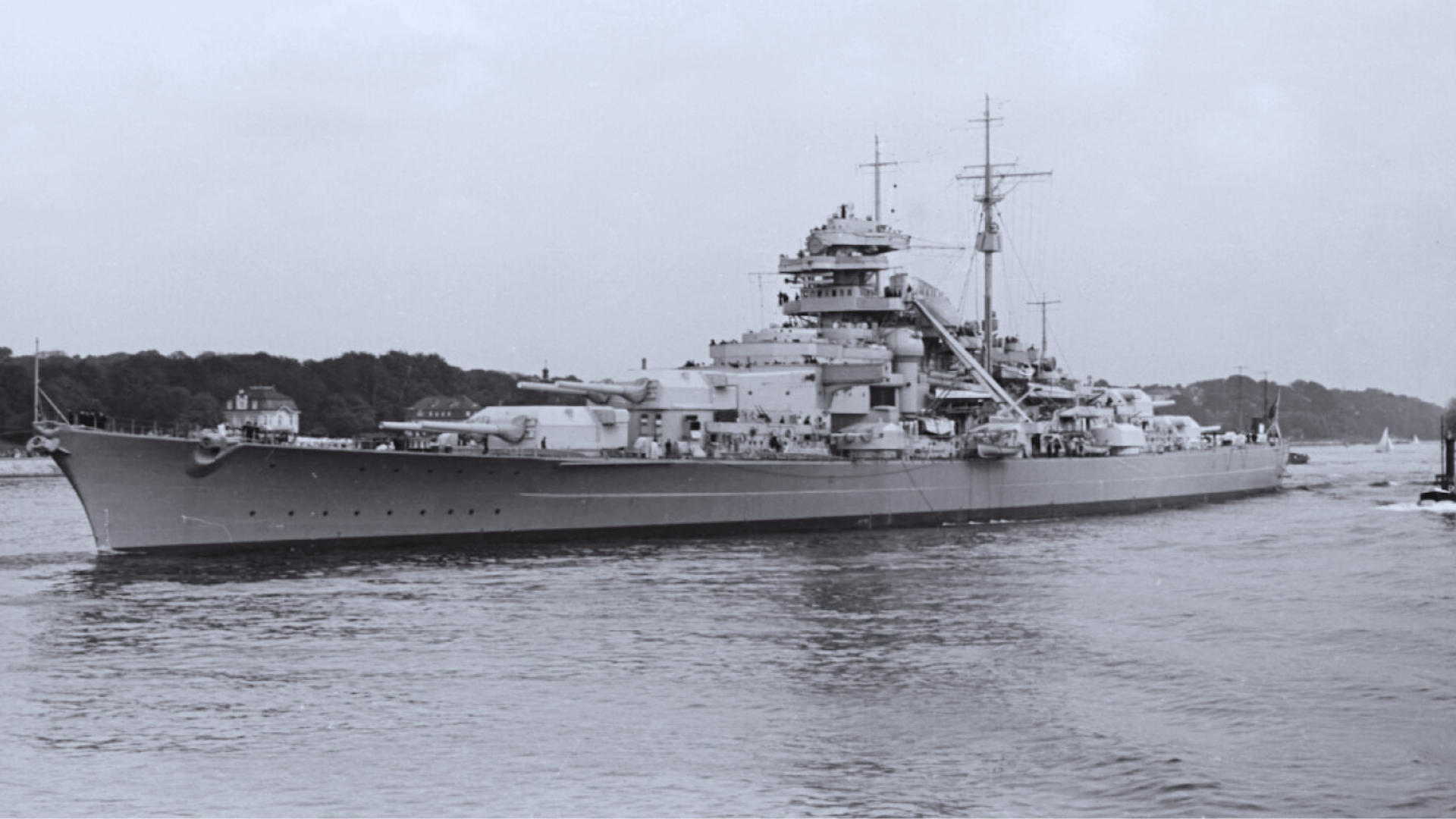
German Federal Archive/Wikimedia Commons
The German high command, confident in the Bismarck’s supposed invincibility, believed that its mere presence would compel Britain to surrender, since blocking their U.S. supplies could mean eventual starvation.
Why was the Bismarck Thought to be Unsinkable?
The Bismarck earned its nearly unsinkable status due to its immense size, measuring 821 feet and weighing over 50,000 tons. Armed with eight 15-inch guns, it possessed unmatched firepower, firing 1,800-pound armor-piercing projectiles up to 21.75 miles.
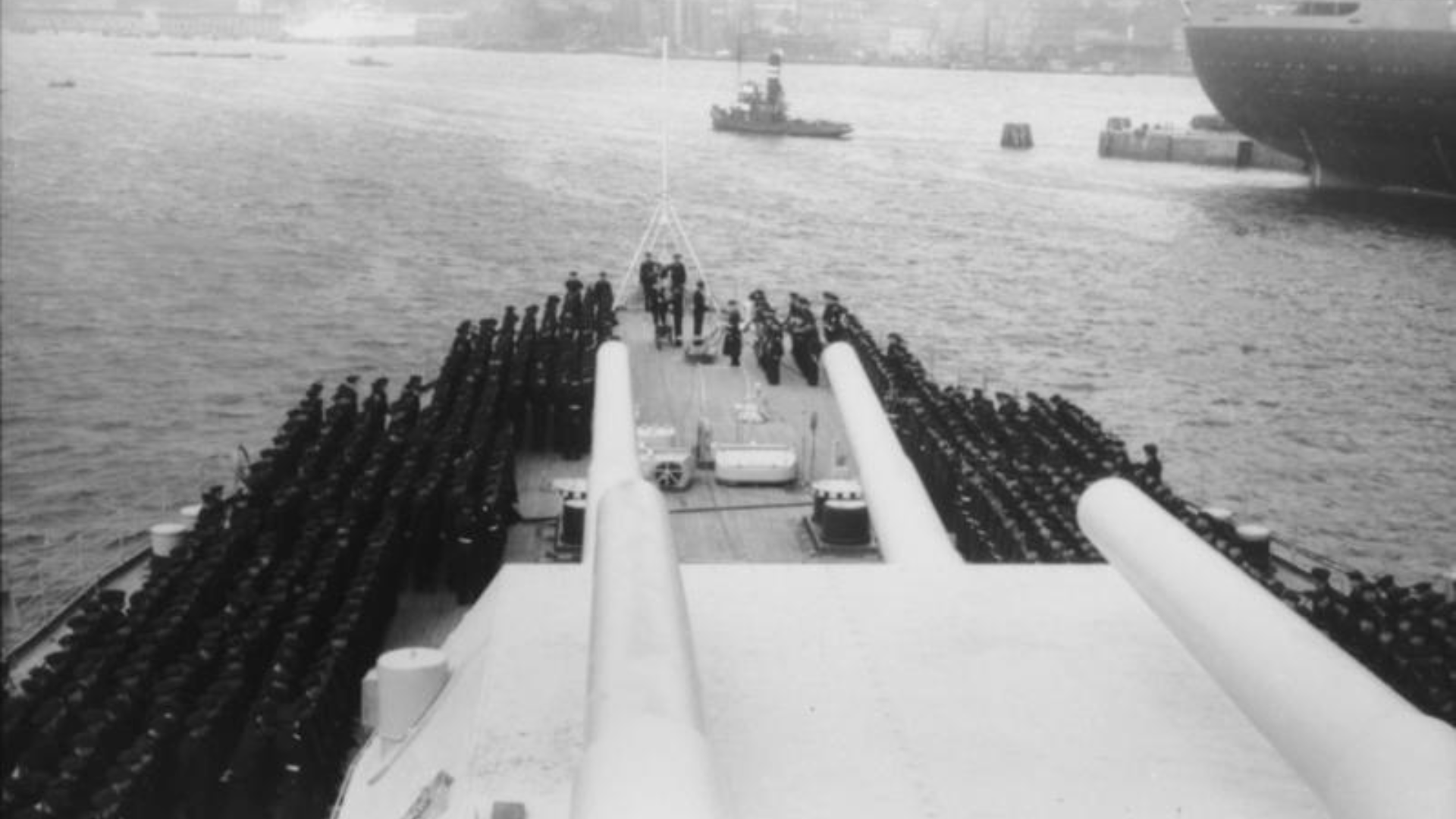
German Federal Archives/Wikimedia Commons
The battleship’s impressive speed of 30 knots, facilitated by 12 Wagner steam boilers, allowed it to outmaneuver pursuers. Its thick armor plating, capable of penetrating 16.5 inches of armor on enemy ships, contributed to its invincibility.
The Bismarck’s Final Voyage
The Bismarck’s final, historic voyage began when the colossus of the seas set sail from Kiel in the Baltic on May 18 alongside the Prinz Eugen, a heavy cruiser.
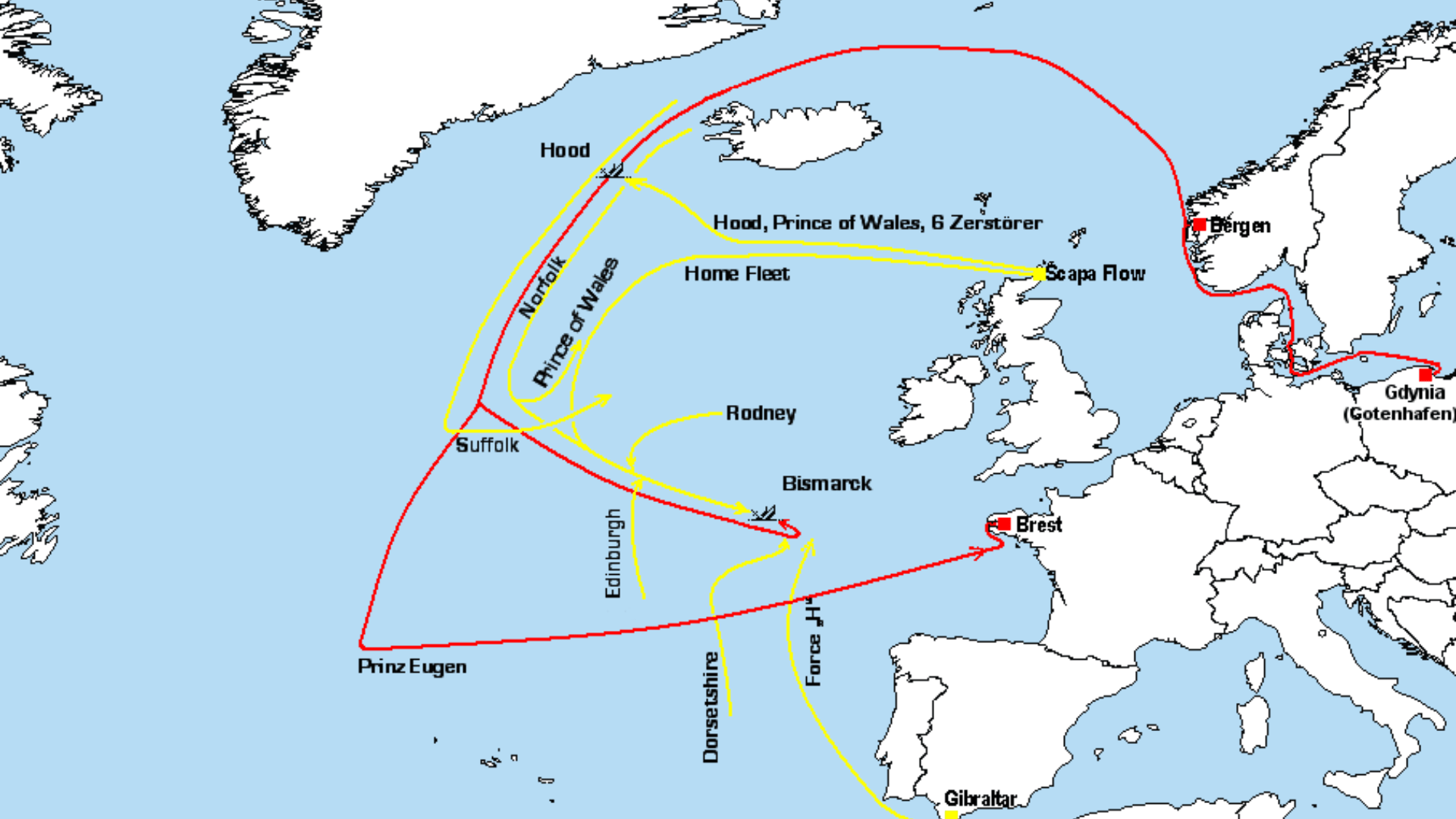
WerWil/Wikimedia Commons
Their mission was to break out into the Atlantic and pose a threat to British convoys. However, an air sighting near Bergen triggered a massive naval and air operation to thwart their plans.
Bismarck Encounter the Hood Battlecruiser in the Denmark Strait
The turning point came in the Denmark Strait, situated between Iceland and Greenland, where the Bismarck and Prinz Eugen encountered the British battlecruiser Hood and the recently commissioned battleship Prince of Wales.
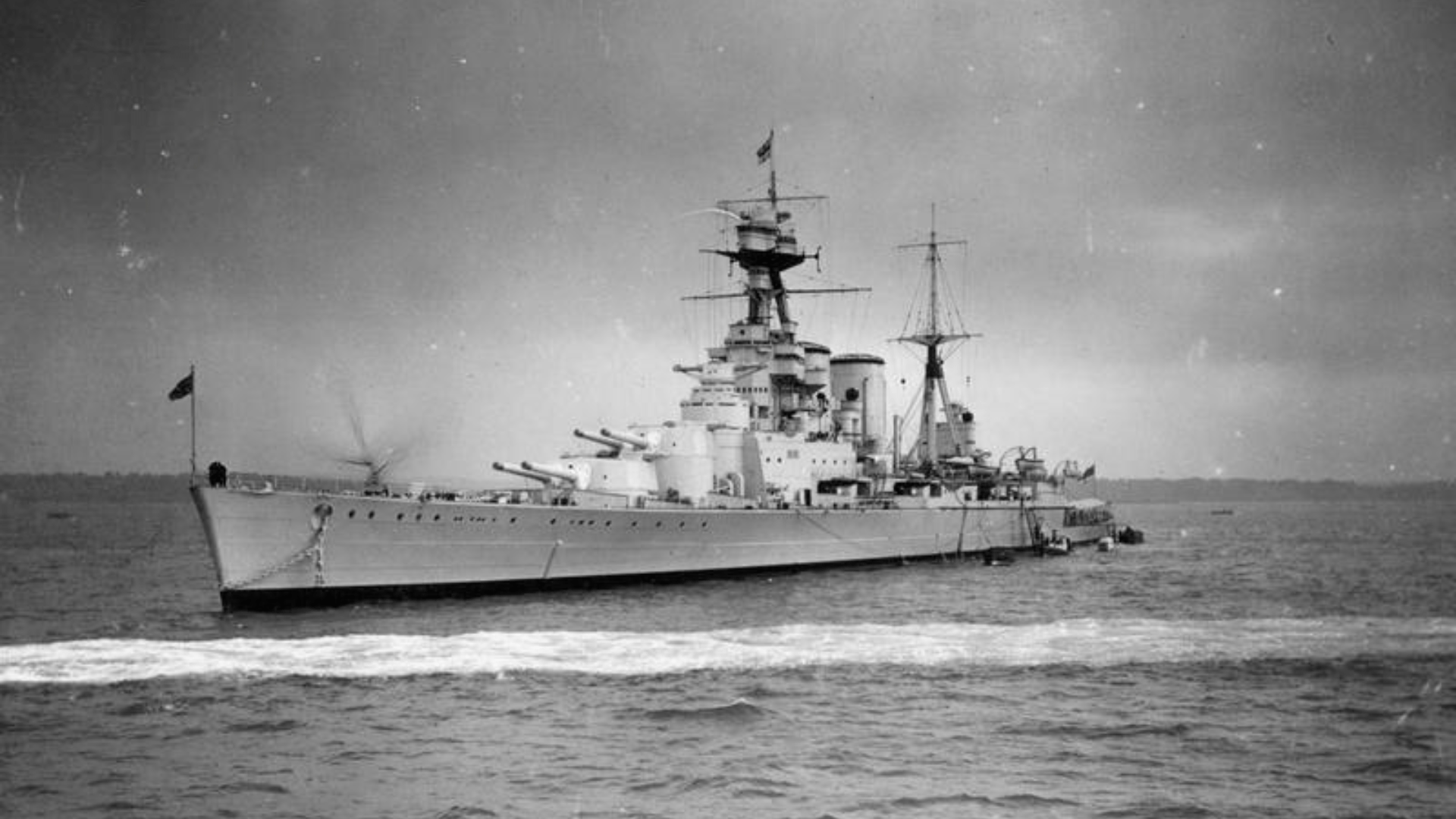
Imperial War Museums/Wikimedia Commons
In the ensuing battle on May 24, the Hood tragically exploded, with the loss of almost all its crew, while the Prince of Wales sustained damage. The Bismarck was hit and critically lost access to a significant amount of fuel oil stored in a forward tank.
British Pursue the Bismarck and Attack in Mid-Ocean
The German ships then separated, with Prinz Eugen temporarily disappearing, and Bismarck making a beeline for the safety of Brest to address its fuel problem.
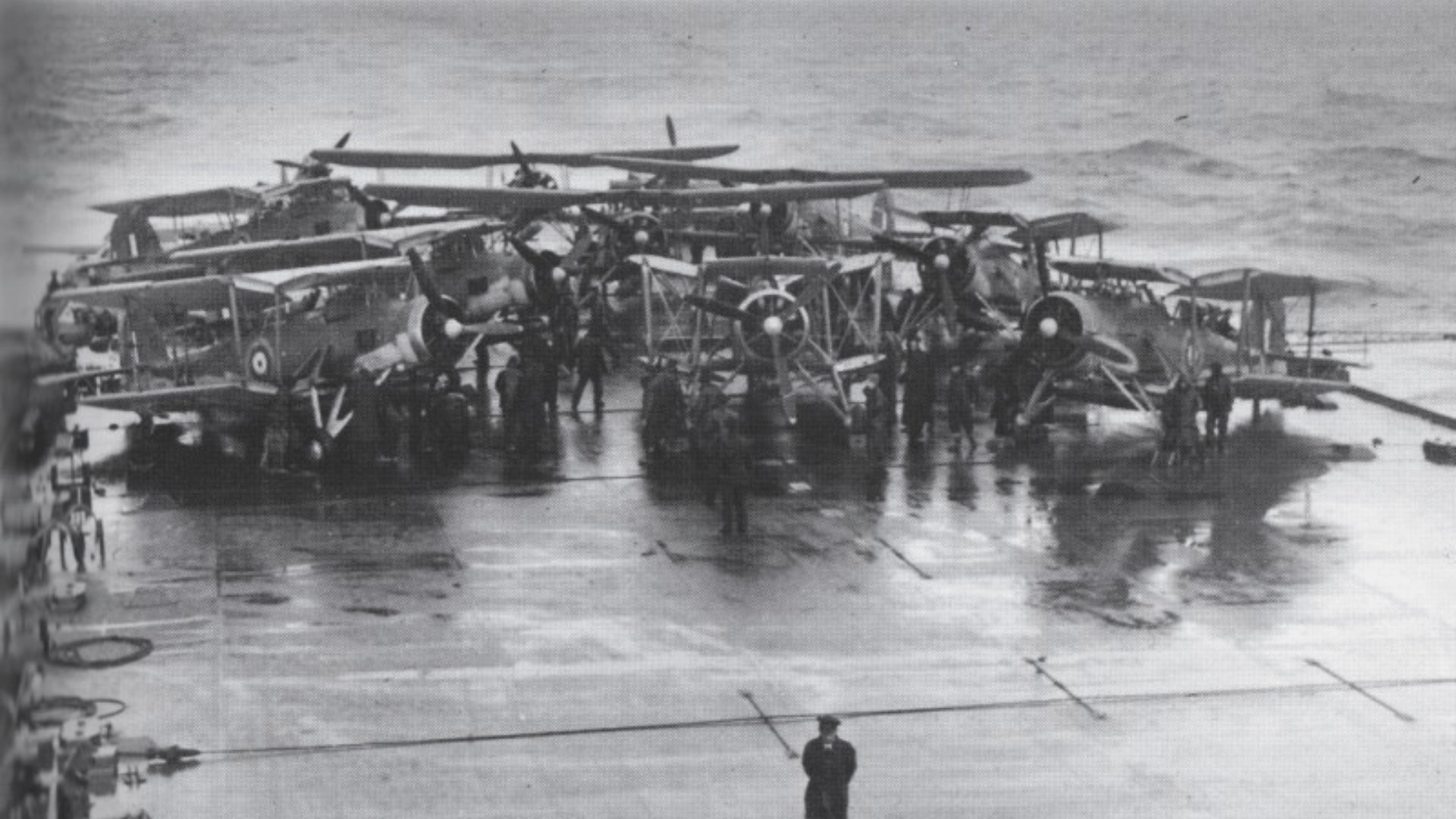
Imperial War Museums/Wikimedia Commons
Resighted by the British on May 26, the Bismarck faced an air strike from the carrier Victorious, marking the first-ever carrier-borne aircraft attack against a capital ship in mid-ocean. Though the strike caused some damage, it did not hinder the Bismarck significantly.
British Home Fleet Reduces Bismarck to Burning Wreck
By May 27, the Bismarck, now limited to a speed of no more than seven knots due to jammed rudders, encountered the British Home Fleet, led by Admiral Sir John Tovey aboard the King George V, and joined by the battleship Rodney.
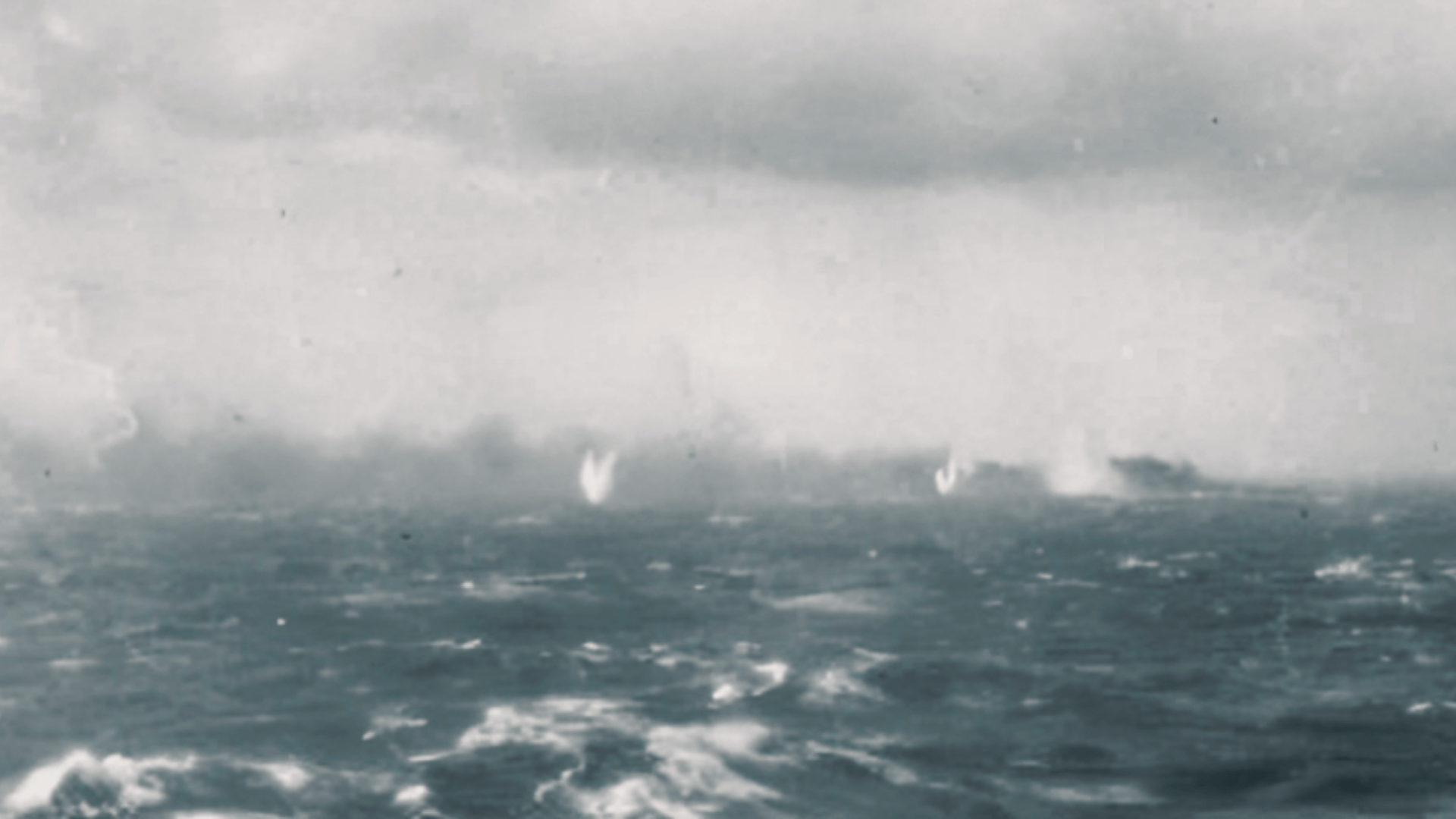
Imperial War Museums/Wikimedia Commons
Despite being unmaneuverable, the Bismarck’s formidable armament remained intact. In a fierce battle, the British fleet engaged the Bismarck, which ceased firing by 9:31 am. By 10:15 am, the once-mighty battleship had been reduced to a burning wreck.
Dorsetshire Finishes Off the Bismarck
With the Bismarck incapacitated and short on fuel, Admiral Tovey turned for home, instructing the cruiser Dorsetshire to deliver the final blow with torpedoes.

Imperial War Museums/Wikimedia Commons
Unfortunately, a false U-boat sighting (possibly an excuse to cover fear of attack) disrupted the rescue of survivors from the Bismarck, leading to only 110 individuals, along with the ship’s cat, being saved from the sinking ship.
Charles Turner’s Painting of the Bismarck
A renowned painting by Charles Edward Turner dramatically captures the Bismarck wallowing in the sea, listing to port with a massive hole in its forecastle emitting flames and smoke.
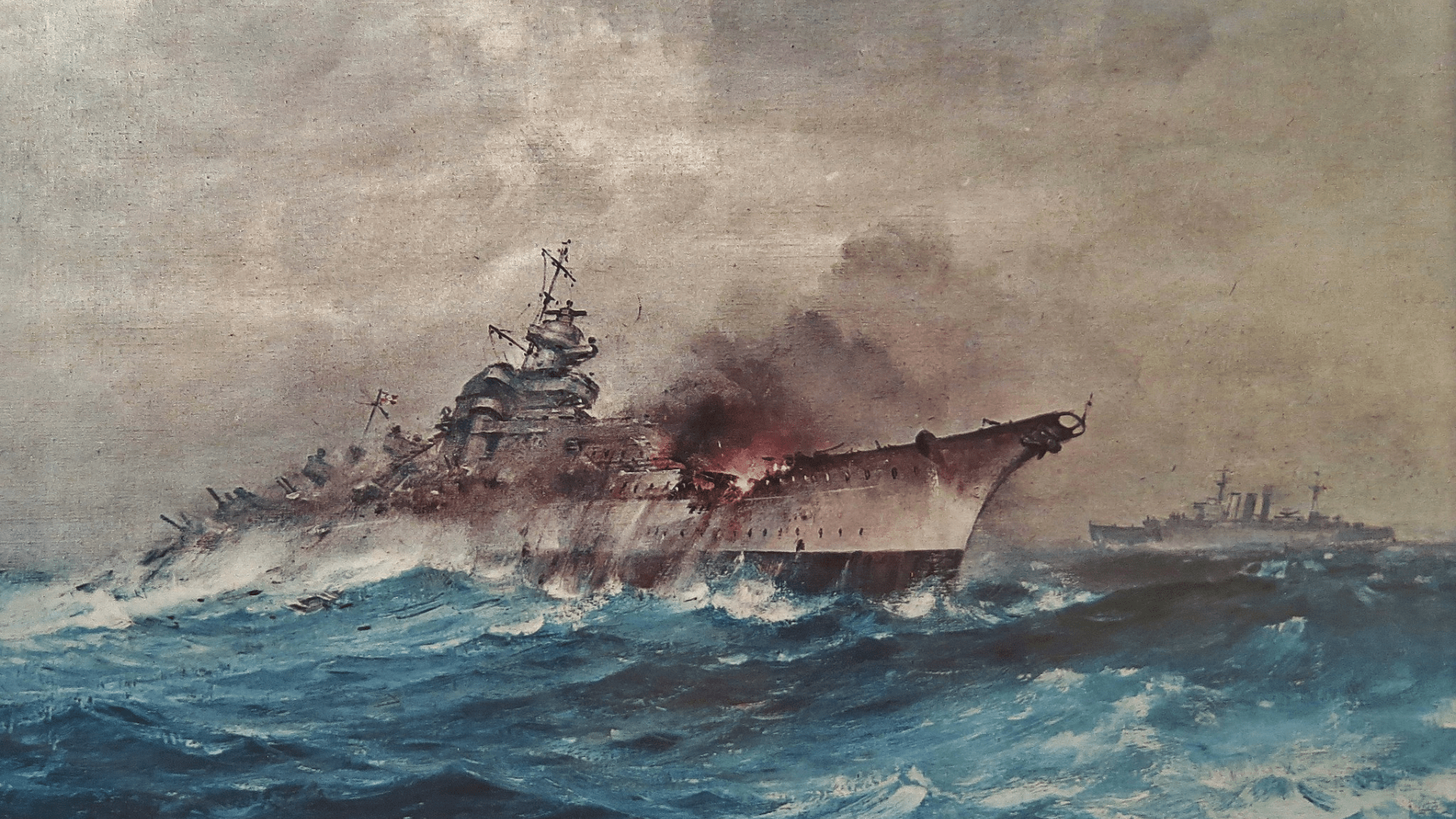
Custom_Cab/Flickr
The Dorsetshire appears in the right-side background of the painting, presumably preparing to launch the deathblow torpedoes.
Who was Charles Edward Turner?
Charles Edward Turner was a prolific artist employed by journals such as the Illustrated London News and The Sphere.

Yannis Papanastasopoulos/Unsplash
His detailed and dramatic paintings, often featured as double-page spreads, aimed to convey the intensity of naval actions.
How Did Charles Turner’s Painting of the Bismarck Come About?
This particular painting was commissioned by Captain Sir Bruce Ingram, the managing editor and proprietor of the Illustrated London News, and presented to Royal Museums Greenwich in 1945.

Illustrated London News/Wikimedia Commons
Ingram’s gesture showcased his support for the museum, although he typically expressed his generosity in different forms. The painting, signed ‘C E Turner,’ remains an important historical artifact, providing a vivid portrayal of the Bismarck’s final moments.
The Relentless Naval Warfare of World War II
The sinking of the Bismarck stands as a symbol of the relentless naval warfare that characterized World War II.
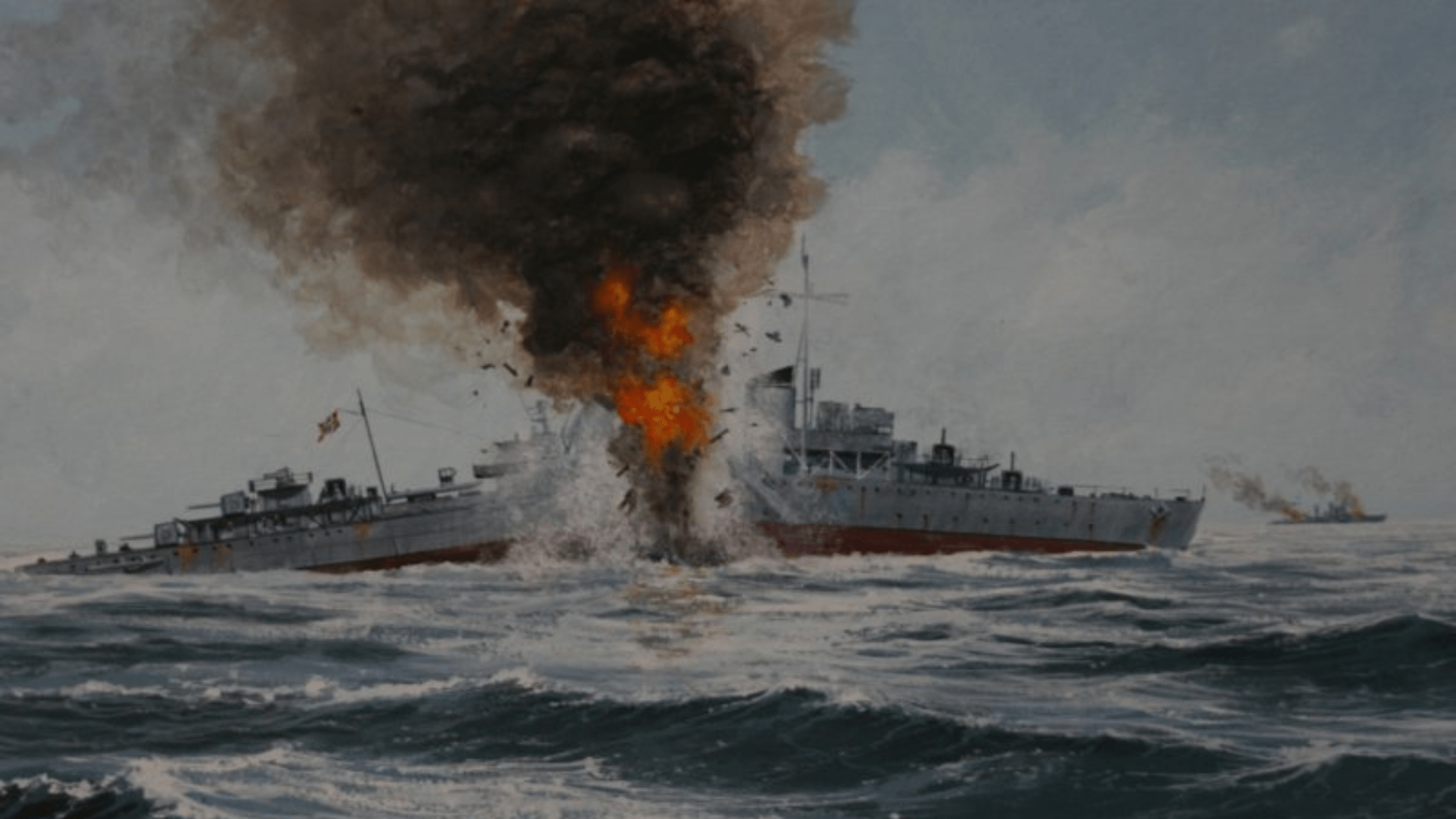
Irwin J. Kappes/Wikimedia Commons
The events surrounding its final voyage spotlight the strategic importance of controlling key maritime routes and the profound impact that naval engagements had on the course of the war. The legacy of the Bismarck endures as both an example of human hubris and the power of Britain’s collective persistence.
Technological Innovations and Failures
The Bismarck boasted state-of-the-art technology with its powerful 15-inch guns and advanced armor plating. Despite these innovations, critical vulnerabilities like its exposed rudder system and fuel tank placement were exploited by the British.
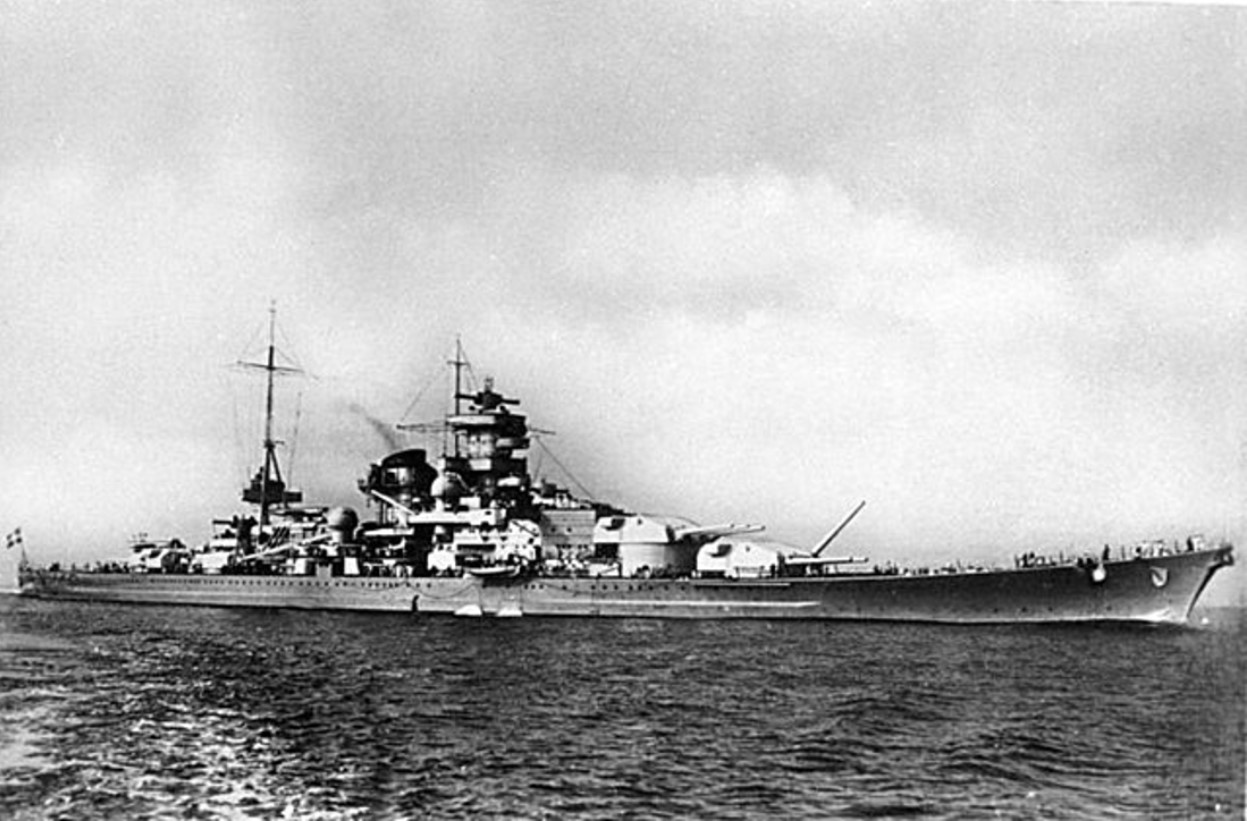
Source: Wikipedia
The technological lessons learned from the Bismarck’s design influenced subsequent naval engineering, highlighting the importance of balancing offense and defense in battleship construction.
Advanced Engineering and Design
The Bismarck’s propulsion system, powered by 12 Wagner steam boilers, enabled a top speed of 30 knots, making it one of the fastest battleships of its time. Its impressive speed allowed it to outmaneuver many pursuers.
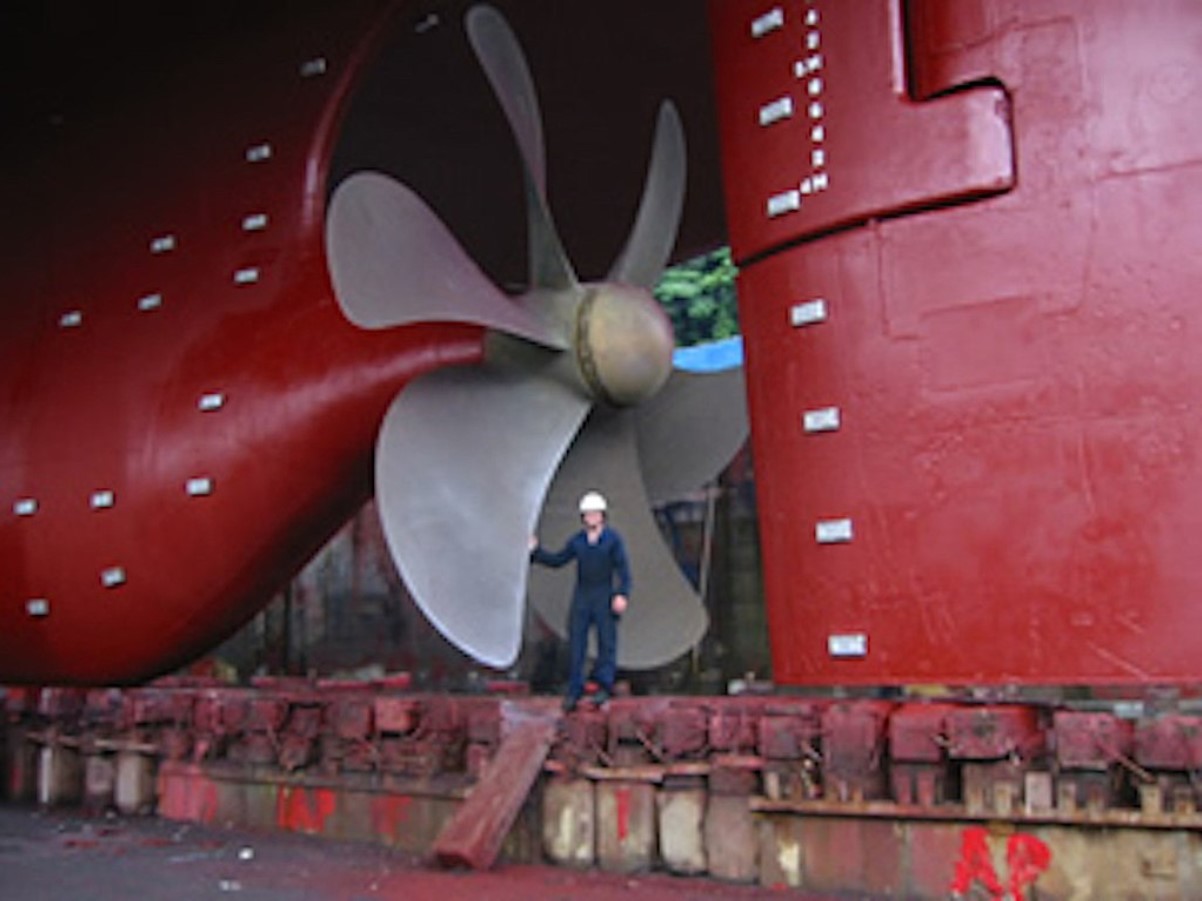
Source: Wikimedia
However, the ship’s large size and weight also made it less agile, a factor that contributed to its eventual downfall during the relentless pursuit by British forces.
Critical Vulnerabilities
Despite its formidable design, the Bismarck’s vulnerabilities became evident during its final voyage. The hit on its forward fuel tank critically reduced its range, forcing it to seek refuge.
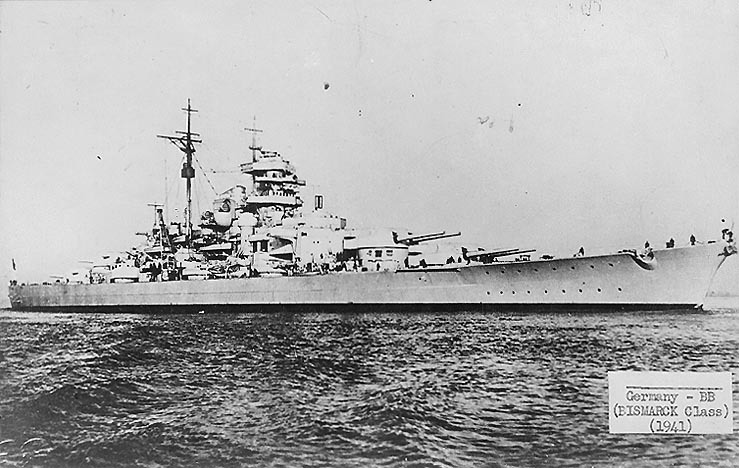
Source: Wikimedia Commons
The jammed rudders, caused by a torpedo strike, rendered the ship nearly immobile, making it an easy target for the British fleet. These flaws underscored the importance of addressing potential weaknesses in ship design.
Espionage and Intelligence Operations
Espionage played a crucial role in the Bismarck’s demise. British intelligence, including code-breaking and reconnaissance, provided vital information on the battleship’s movements.
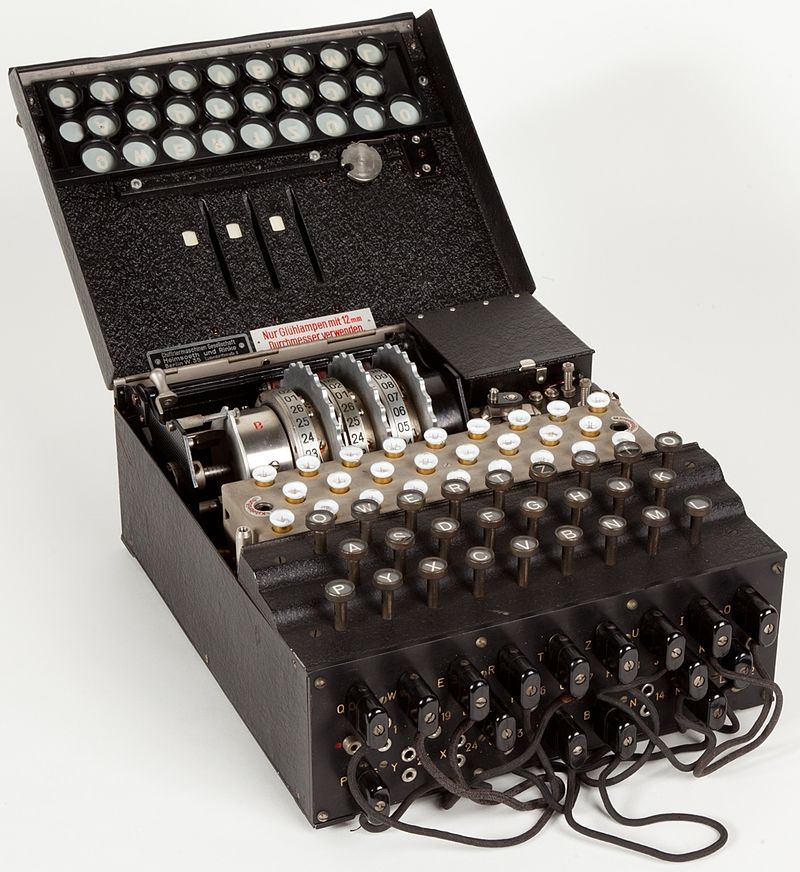
Source: Alessandro Nassiri/Wikipedia
The Enigma machine and deciphered German communications allowed the British to track and intercept the Bismarck, demonstrating the significant impact of intelligence operations on naval warfare outcomes during World War II.
The Role of Reconnaissance
Reconnaissance missions were pivotal in locating the Bismarck. British aircraft from the carrier Victorious and coastal command spotted the battleship, enabling precise attacks.

Source: Caleb Oquendo/Pexels
The successful reconnaissance highlighted the importance of aerial surveillance in naval strategy, significantly contributing to the coordinated efforts that led to the Bismarck’s sinking, showcasing the synergy between intelligence and military operations.
Declassified Documents Reveal Insights
Declassified documents have shed light on the intricate intelligence efforts behind the Bismarck operation.

Source: KamranAydinov, Freepik
These records reveal the extent of the British naval intelligence network and the collaborative efforts between various military branches.
Comparative Analysis with the Battle of Midway
The Battle of Midway, like the pursuit of the Bismarck, showcased the importance of intelligence and air power in naval warfare. Both engagements highlighted the shift from traditional battleship dominance to aircraft carrier superiority.

Cassowary Colorizations/Wikimedia Commons
The strategic use of aircraft in both battles demonstrated the evolving nature of naval tactics during World War II, influencing future naval engagements and doctrines.
Impact on Battle of the Atlantic
The Bismarck’s mission to disrupt Allied supply routes was part of the broader Battle of the Atlantic. Its sinking marked a turning point, boosting Allied morale and weakening the Kriegsmarine’s offensive capabilities.

Source: Wikimedia
The relentless pursuit and eventual destruction of the Bismarck underscored the importance of maintaining control over key maritime routes, a critical factor in the overall outcome of the war.
Lessons for Future Naval Strategy
The Bismarck’s engagement taught valuable lessons for future naval strategy. The importance of air superiority, intelligence, and coordinated strikes became evident.
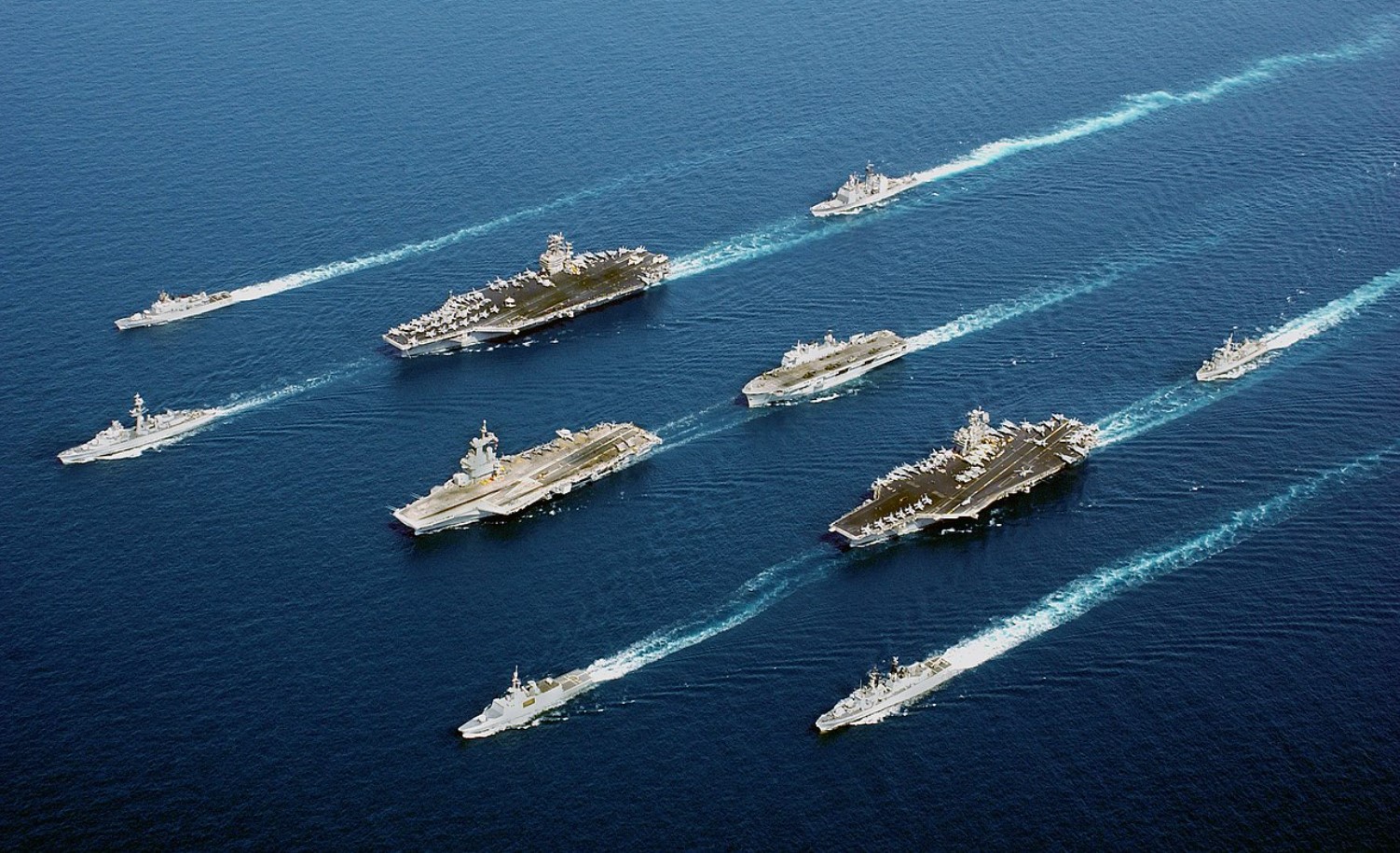
Source: Wikimedia
Navies worldwide began to prioritize aircraft carriers and support vessels over traditional battleships. The Bismarck’s fate highlighted the need for adaptability and innovation in naval tactics, shaping the development of modern naval forces.
The Depth of the Wreck
The Bismarck rests at a depth of approximately 15,719 feet, deeper than the Titanic, which lies at about 12,500 feet.

Source: Freepik
The extreme depth and location in the Atlantic make exploration challenging, yet the site remains a significant focus for underwater archaeologists and historians.
Archaeological and Environmental Studies
The site has been the subject of underwater archaeological expeditions, providing insights into the battleship’s final moments.
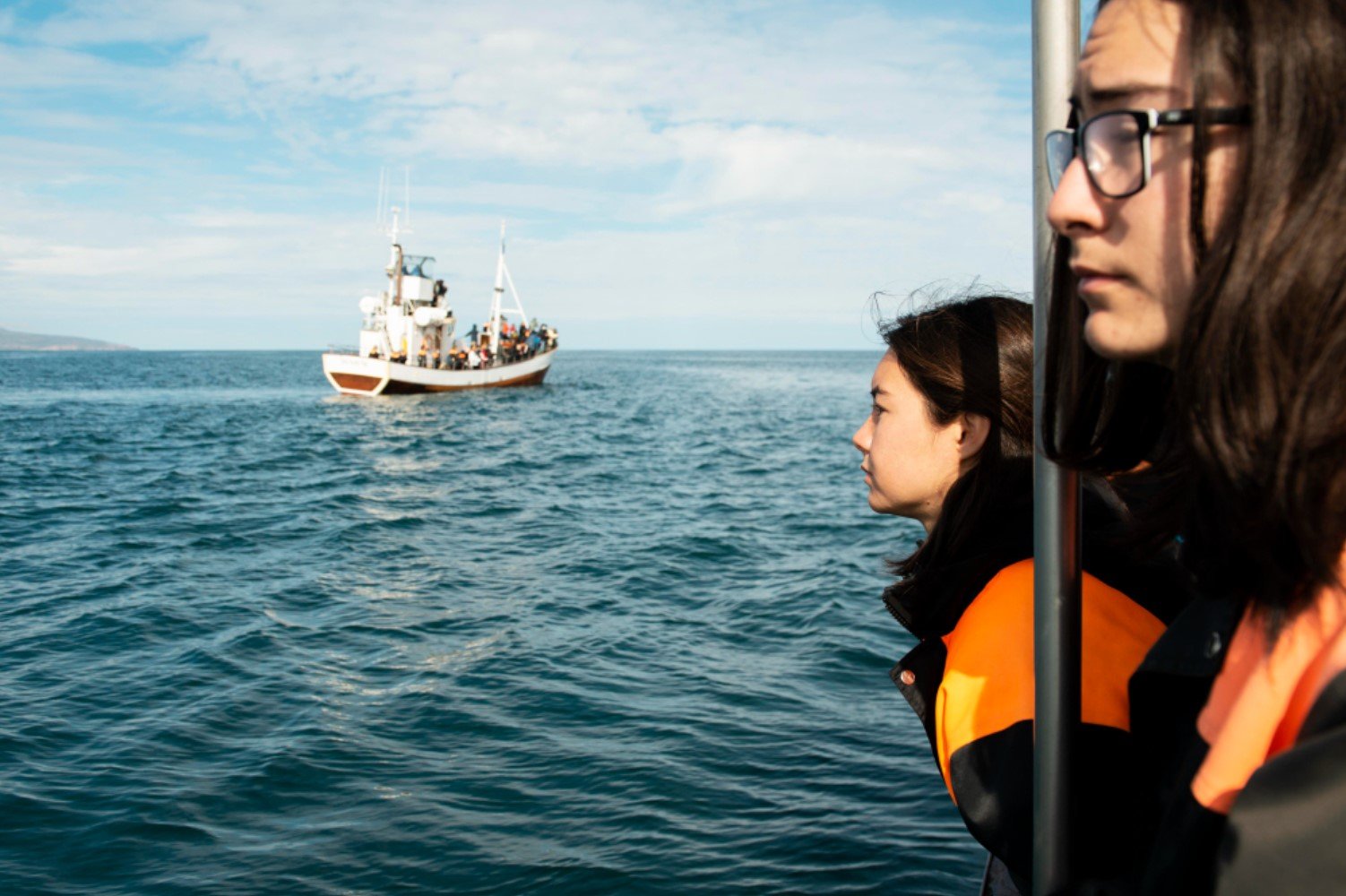
Source: Freepik
Environmental studies have also been conducted to understand the impact of the wreck on the surrounding marine ecosystem, contributing to historical and environmental research.
Hitler's Reaction and Potential for Raising the Bismarck
Hitler was reportedly shocked and angered by the loss of the Bismarck, viewing it as a significant blow to Nazi naval power.

Source: Bundesarchiv, Bild 183-S33882 / CC BY-SA 3.0 DE/Wikimedia Commons
The idea of raising the Bismarck has been deemed impractical due to its depth and the extensive damage sustained.
